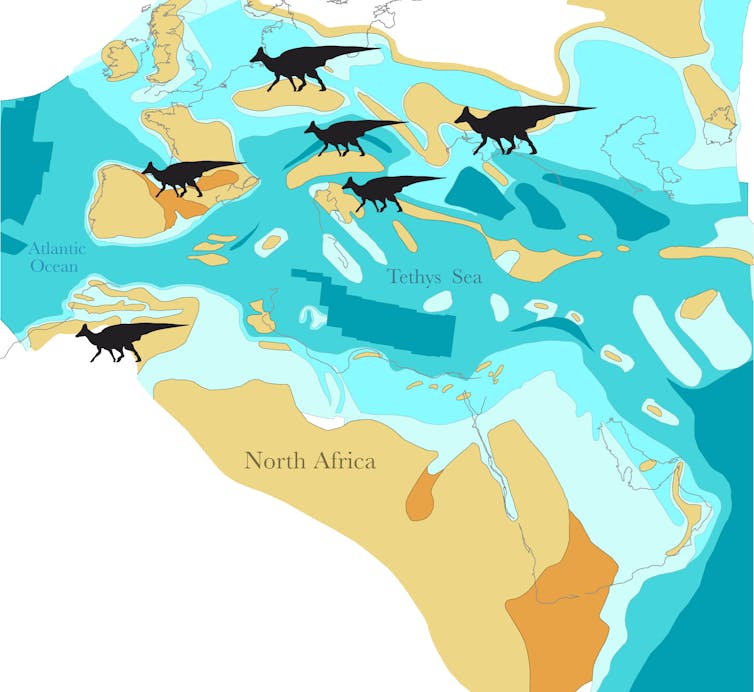How Did Duckbill Dinosaurs Get to Morocco?
I came across THIS ARTICLE and found it intriguing. Duckbilled dinosaurs are a North American family and they live on land. You can't walk from North America to Morocco. They developed long after the break up of Pangea
North American duckbills are large, the earliest Moroccan ones are small, but they got bigger later. (Geology speak here: later means millennia.)
There are duckbills in Europe, the article does not discuss how they got there. But you could not walk from Europe to Africa at that time - the distance was greater then than now. Tethys was much wider than todays Mediterranean.
So how did they get to Morocco? We do not know how, but they did; the author says that it must be by some extraordinary means. Floating, rafting, swimming are discussed in the article and the author goes on to suggest that freak events, although rare, can have major effects.
Amazing to think what finding a bone can can lead to!
Distribution of duckbill dinosaurs in North Africa and Europe. Nick Longrich


